
Japanese Toilets
High-tech Japanese Toilets and Their Control Panels
Japan is way ahead of European countries in toilet technology. The "no-touch" automatic flushing systems came out of Japan. They were common in Japan but unseen elsewhere for a long time. They eventually became common in public toilets in the U.S., but this only happened after they had been common in Japan for several years. The raised porcelain commode seat, called yōshiki or "Western-style", has become more common in homes than the traditional washiki or squat toilet.
Western-style toilets and urinals began to appear in Japan in the early 20th century, but they only became widespread during the American occupation after World War II. In Japan Housing Authority adopted Western style toilet bowls in 1959. The Western Housing Corporation popularized a design with a corner type tank.
1964 brought the first warm-water washing toilet seat to Japan. It was actually a Swiss design, the Toyo pottery company (now Toto) imported them. In 1967 Ina (now Lixil) began domestic manufacture of warm-water washing toilet seats. Toyo followed in 1969.
Toto, a Japanese company now manufacturing and selling toilets in the U.S., introduced their Washlet model in 1980. This was their first toilet with an integrated bidet sprayer. Now raised commode seat toilets in Japan commonly include adjustable heat for the seat, water sprays from multiple directions with adjustable temperature, drying air streams, and possibly more. The brand name Washlet has become a generic term for a seat with a built-in bidet and possibly more. Or, in Japanese, woshuretsuto, ウオシユレツト.
Toto is the leading manufacturer, with about 65% of the market share for multi-function toilets. Inax is the second largest, with 25%.
A foreign visitor in the 1990s and maybe into the mid 2000s might only encounter these in a luxury hotel room. Now hostels and low-cost guesthouses routinely have them. By 2002, almost half of all private homes in Japan have a Washlet-style toilet.
I was in Japan for a month in 2017, and I'm not sure if I ever saw a raised commode toilet with a plain seat. I might have seen one, two at the most. Electically powered seats with heated surfaces, water sprays, and drying air had become standard in Japan.
Let's start as I did, at the Khaosan World Asakusa Ryokan and Hostel in Tokyo. A bed in a shared room is just ¥3640 or about US$ 32 per night. It's a very nice place to stay, but it isn't a high-rise luxury hotel. And look at the fancy toilet!
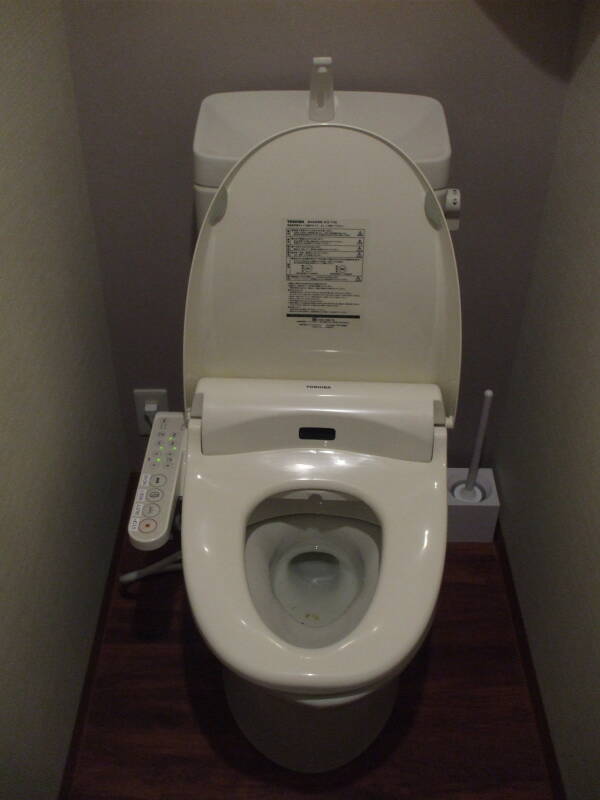
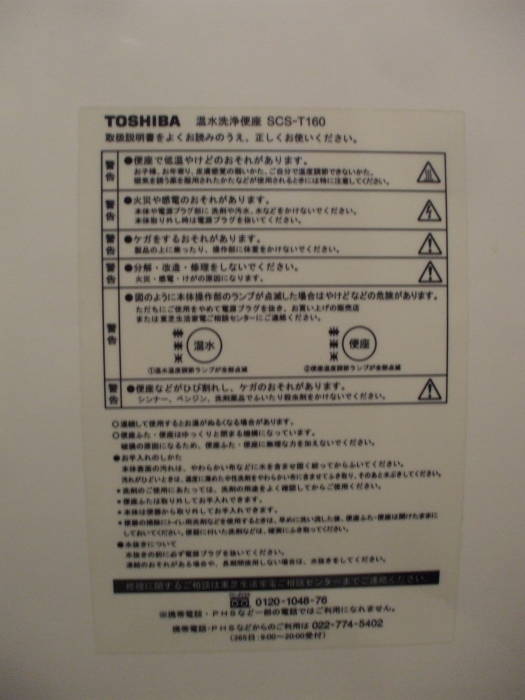
The first thing you notice is the small arm beside the seat, and the dense text on the underneath face of the lid.
The arm is a control panel. They have helpfully added some explanations for people who can read English but can't read Japanese.
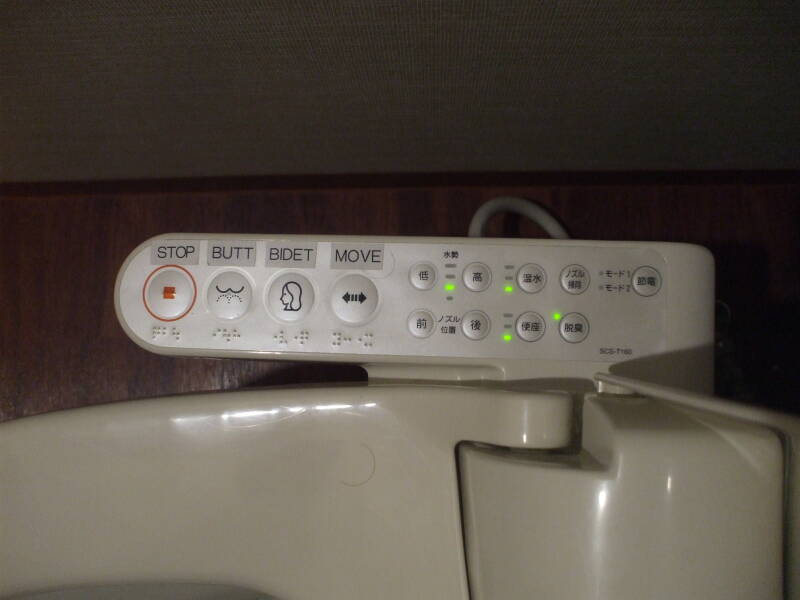
Also notice the small sink on the top of the tank. The tank is refilled by the spigot pouring an exposed water stream. It's a clever idea. The water fills the tank just the same, and right there you have a source of water if you want it. You can wash your hands without using any more water.
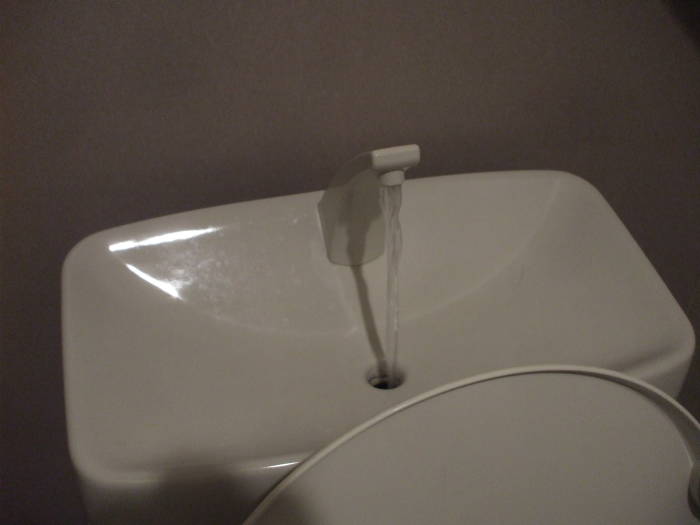
Of course, remain seated if you want a bidet-like spray from below. That's available through the control arm. What they have labeled "BUTT" is a spray from the rear, while their "BIDET" label is for a spray from the front. Fine-tune the spray head position with "MOVE".
Japanese Toilet SlippersThe next place I stayed was the Central Guest House in Kamakura. Their toilet had an infrared sensor that automatically raises the lid when you enter the room. Notice the toilet slippers. My feet are far too large for any pair of toilet slippers I have ever encountered.
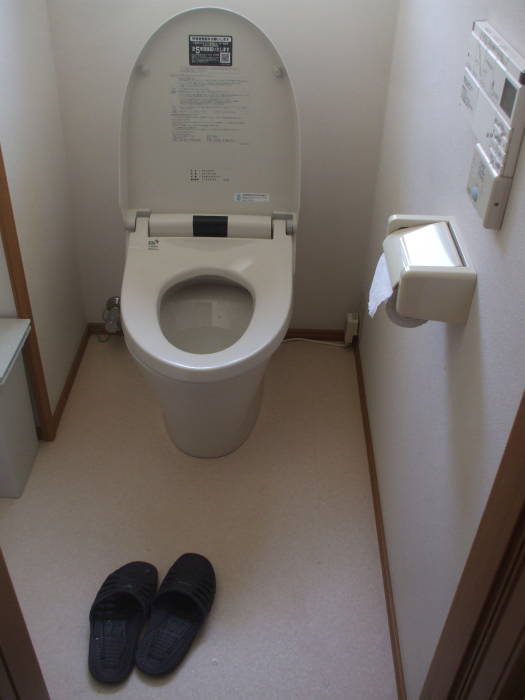
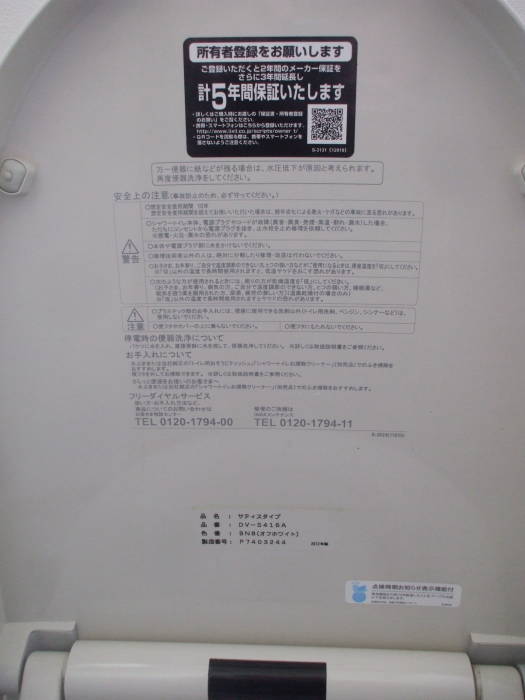
The Sound Princess
There is a national pattern of Japanese women being highly embarrassed at the thought of others hearing them urinate. It's national-scale paruresis! In 1988, Toto introduced a device that simulates the sound of a continually flushing toilet. Other manufacturers have come up with their own versions.
Toto's is called the Otohime or the Sound Princess, named after a legendary goddess. Otohime is described in legends as the princess of the undersea palace Ryūgū-jō, the Dragon Palace Castle.
Many toilets now include one, either as a separate battery-powered device on the wall or as an integrated feature of the control panel.
If you use the the electronic sound unit instead of constantly flushing, you can save up to 20 liters of water. However, the belief that the Toilet Princess sounds obviously artificial arose and quickly spread. Many women have stayed with the old method of continuously flushing the toilet the entire time.
An article in The Japan Times reports that the idea goes back to the Edo period. During the first half of the 19th century, an inn for dignitaries in Yakage featured おとけし の つぼ or Otokeshi-no Tsubo, the Urn for Covering the Sound.
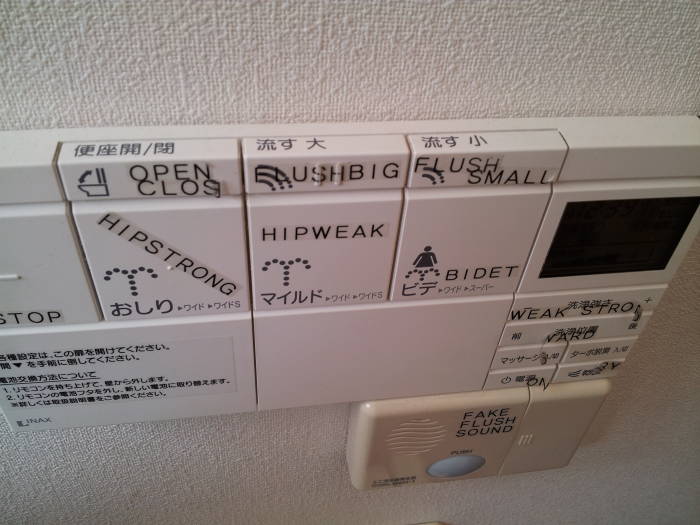
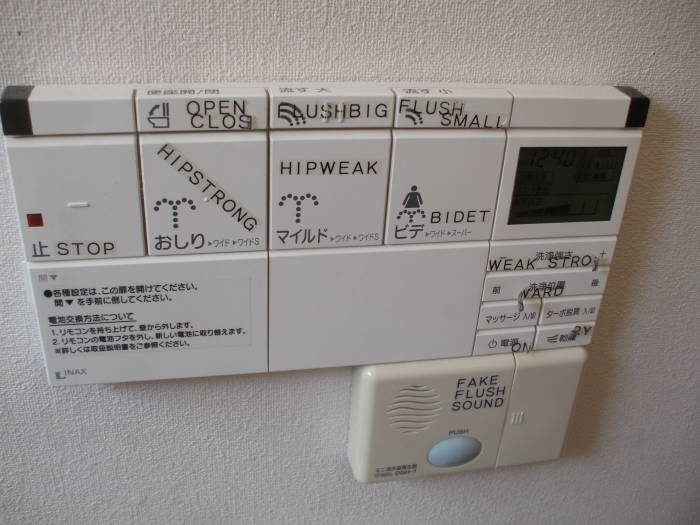
This toilet's control panel is mounted on the wall. As the guesthouse has foreign visitors, they have added English annotations. They added the Fake Flush Sound, a separate battery-powered unit.
Having learned how to sound out katakana and hiragana, I can see that they have relabeled these as:
| HIPSTRONG | あしり | oshiri |
| HIPWEAK | マイルド | mairudo |
| BIDET | ビデ | bide |
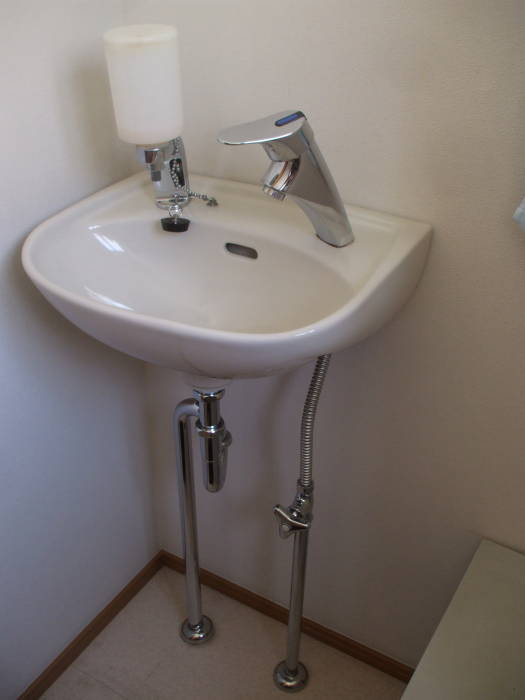
The shower there is typical: compact and efficient. You simply turn on and adjust the heat a minute or less before starting your shower.
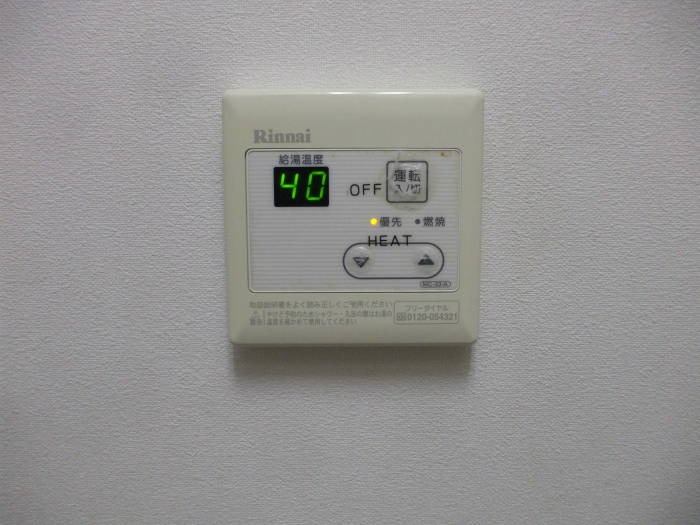
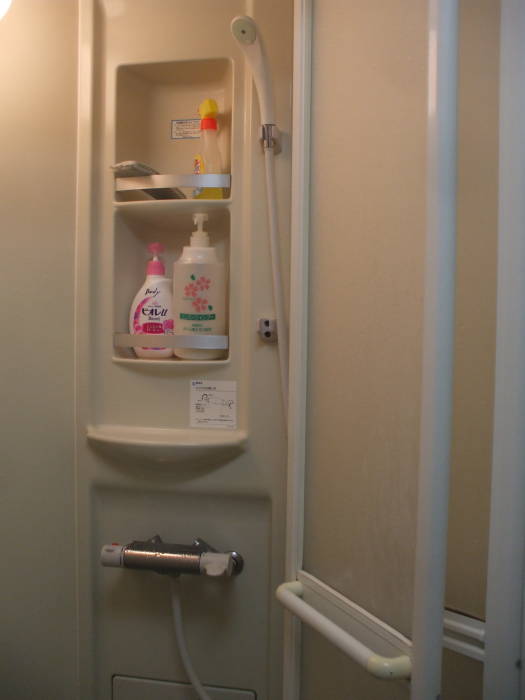
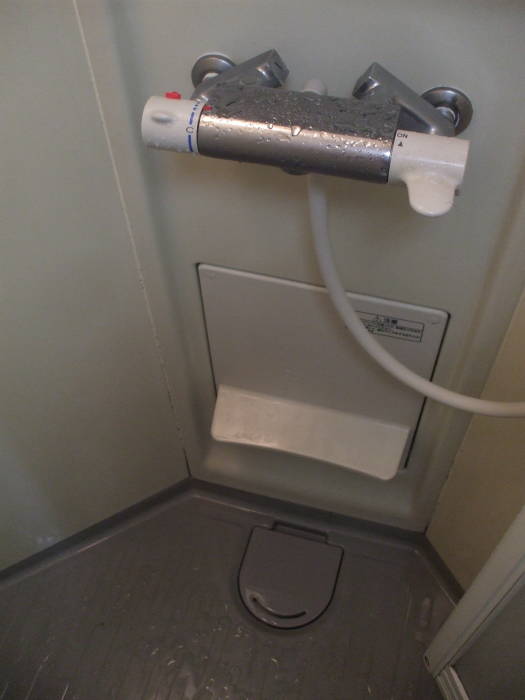
One knob for temperature mix, the other for flow rate.
The Hiloki Hostel in Nara had one of the simplest toilet control panels I saw on the trip.
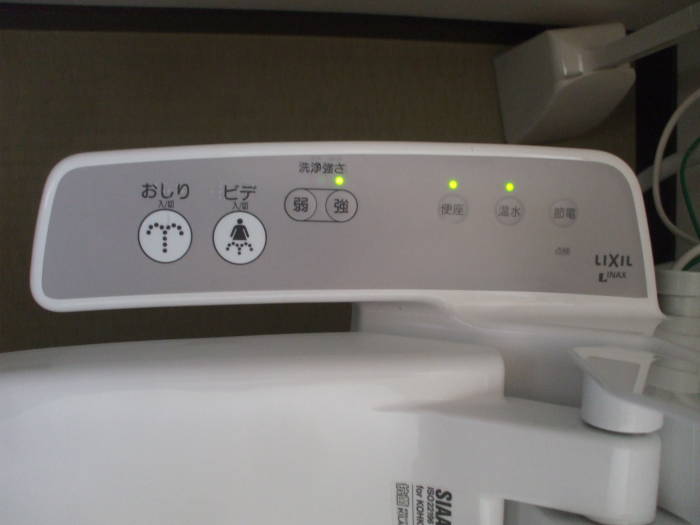
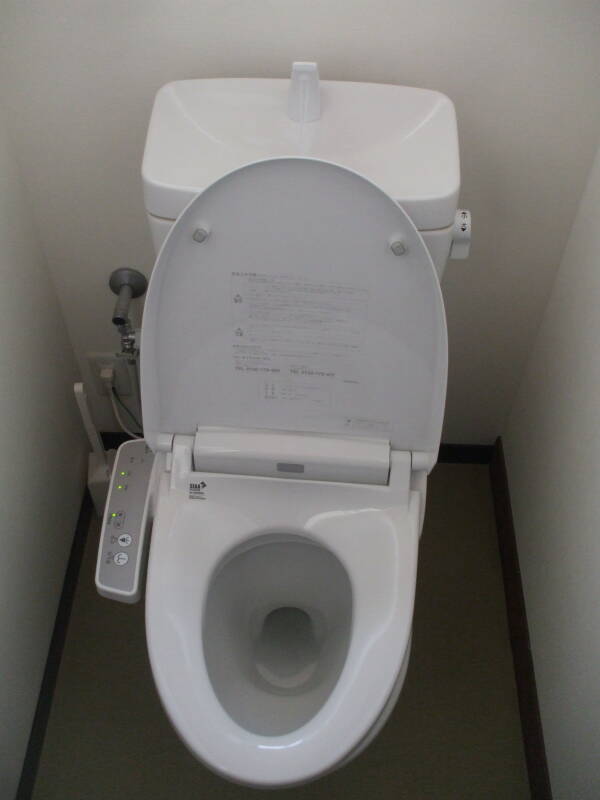
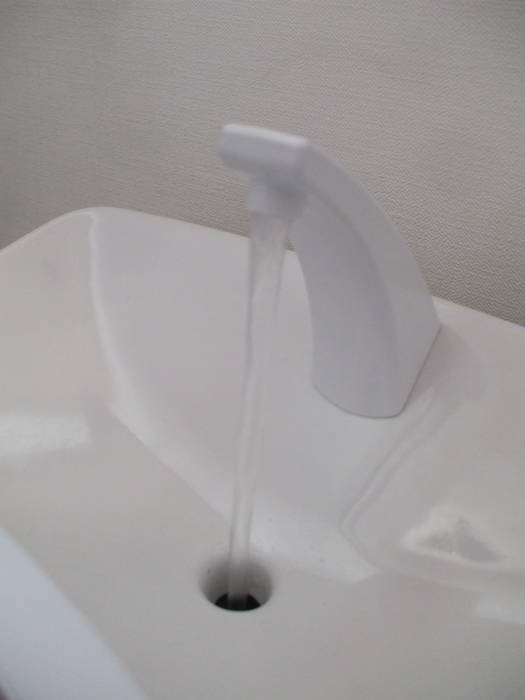
Some control panels are sleek and vague, like this one in a building at Shin Marunouchi near Tokyo Station. "Press the button to flush", it says. But which button? Remember, 大 for large and 小 for small. Those are the first two small buttons along the top. The larger buttons control various spray functions.
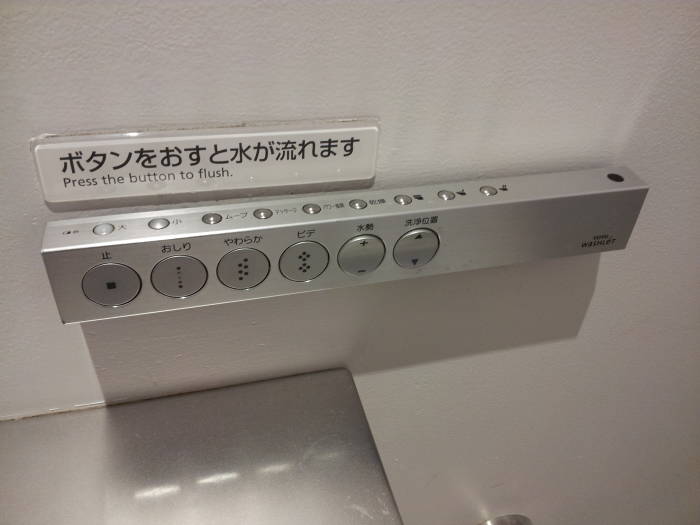
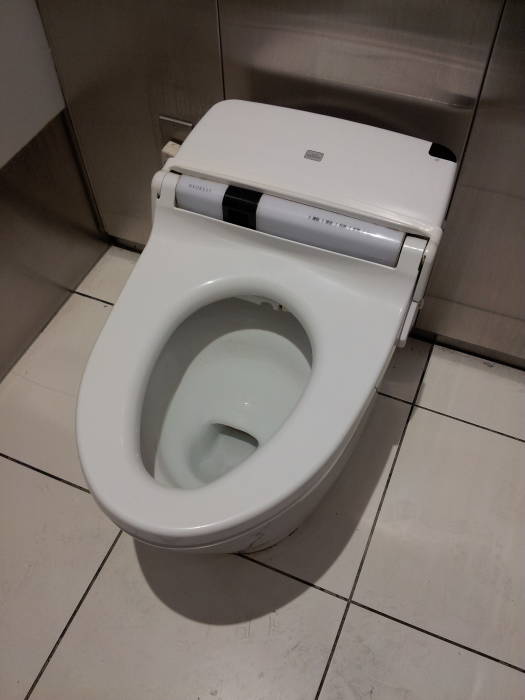
The control panel at K's Place, a hostel in Kyōto, has built in sound and volume control. It also has a "powerful deodorizer".
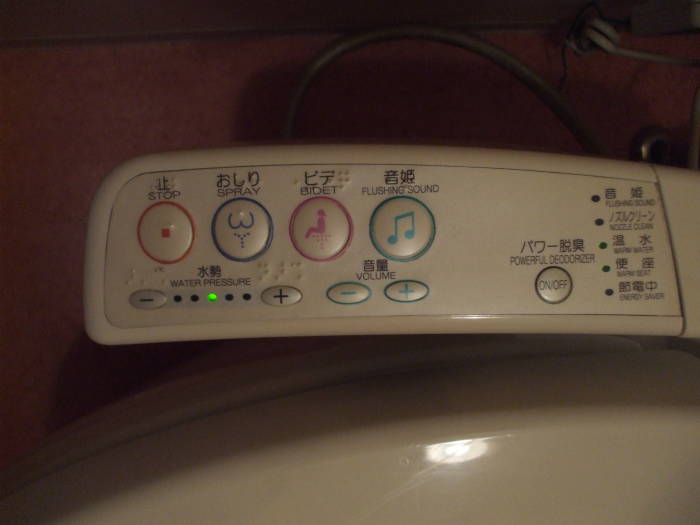
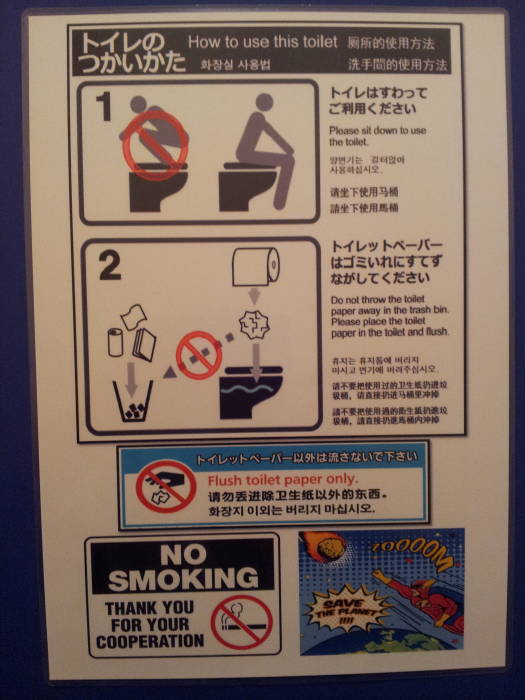
A pub in Nara has a control panel on the wall. Big and small flush on the top. Stop, あしり or bidet, and ビデ or front wash across the top row on the front. And then, ah, lots of other things.
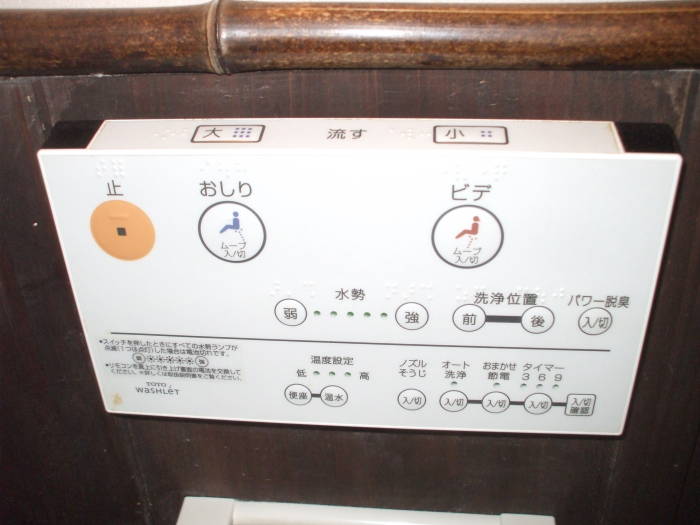
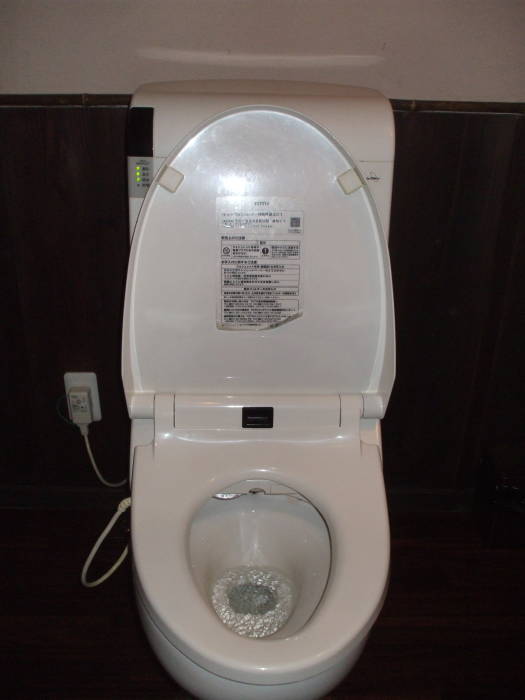
The Bar de Nikko has a side-mounted control panel and a different instructional sign.
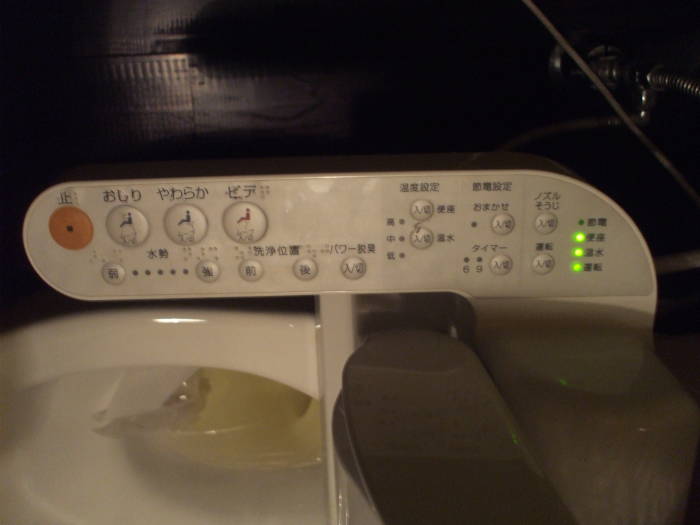
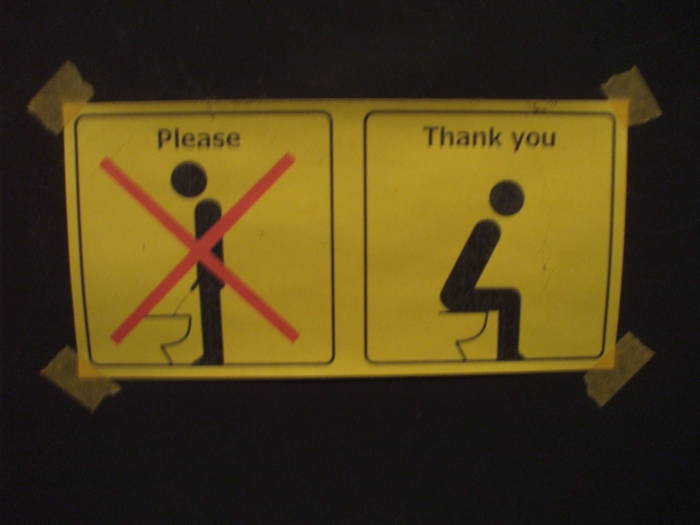
Also in Nikko, and while we're discussing plumbing in general, the Nikkorisou Backpackers has both a tub and a shower.
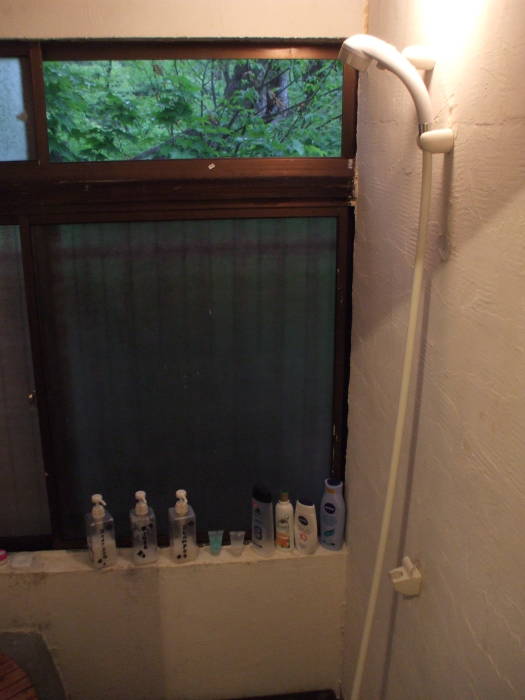
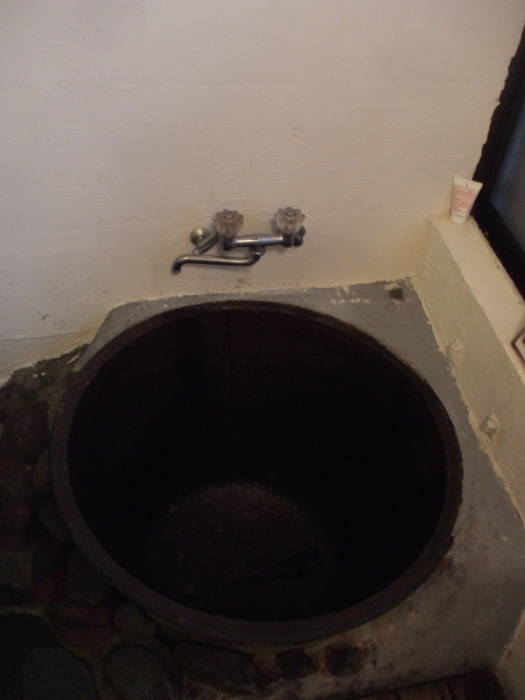
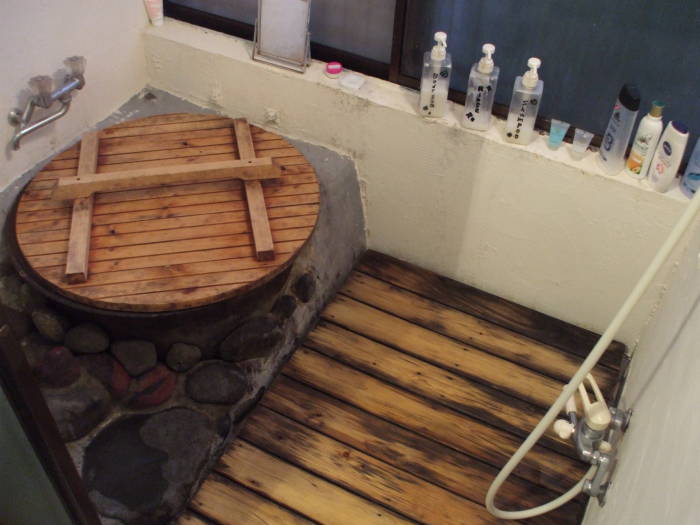
The 23 Bar in the Ameri-kura district of Osaka uses a bathroom down the adjacent hallway, past some clothing stores. It has one of the most complex control panels I encountered.
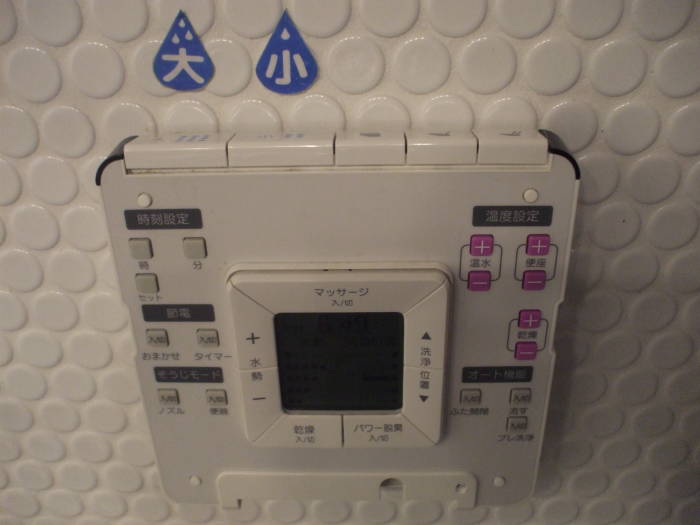
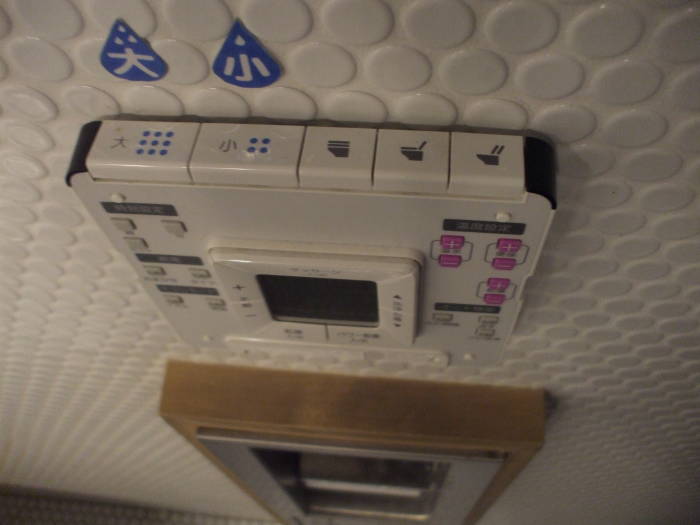
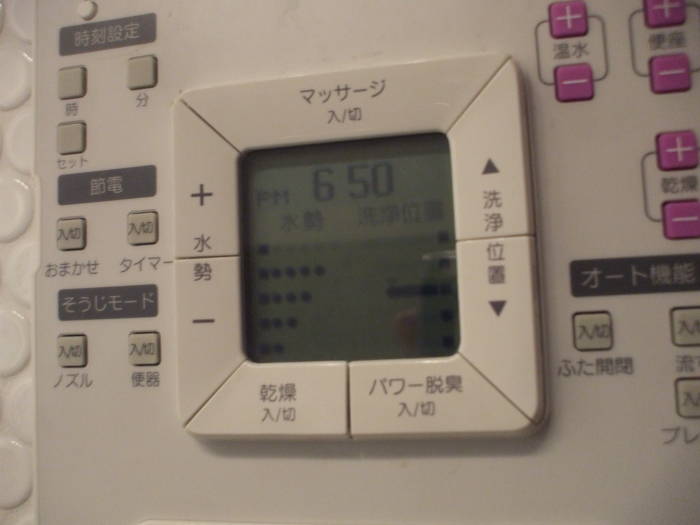
Here are two last control panels, both in the Asakusa district of Tokyo. The first is at the Bunka Hostel, the second is in an izakaya along Hoppy Street.
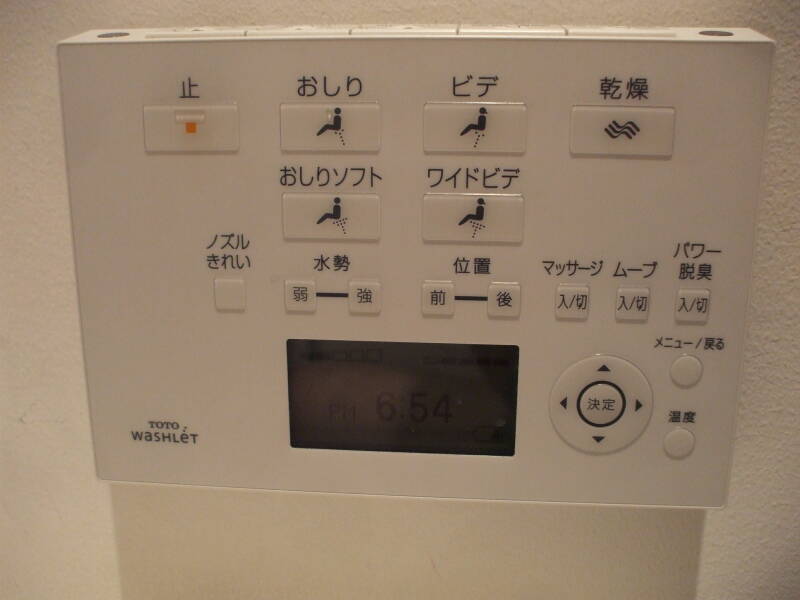
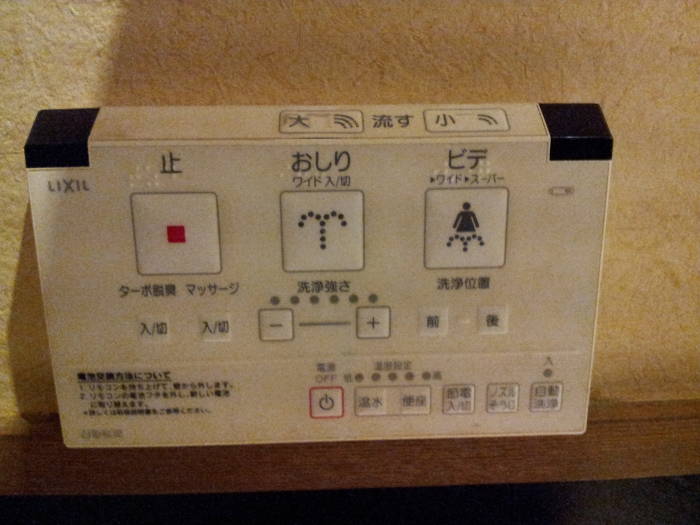
Overwhelmed by the Vast Array of Control Labels?
We aren't the only ones! The Japanese toilet manufacturers announced a standardized set of control panel symbols in early 2017. At least the panels manufactured after that date should mostly use a common set of symbols.
BBC story Industry announcement Press release Manufacturers' signs
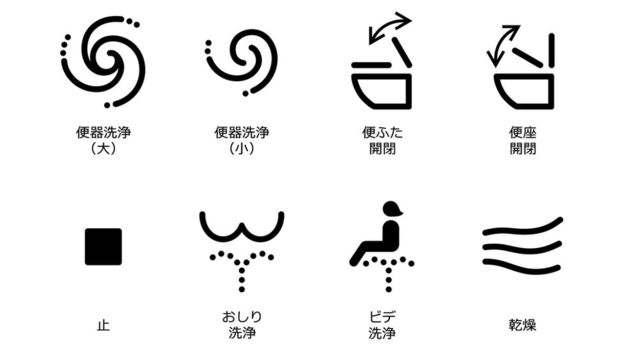
Big Flush, Little Flush, Open/Close Lid, Raise/Lower Seat
Stop, Rear Spray, Front Spray, Air Dry
Buying Your Own Sophisticated Toilet Seat
If you have decided that you must have your own multi-function toilet seat, you can purchase one in Japan. This picture is in a store in the Akihabara district where you can find most any electrical or electronic device.
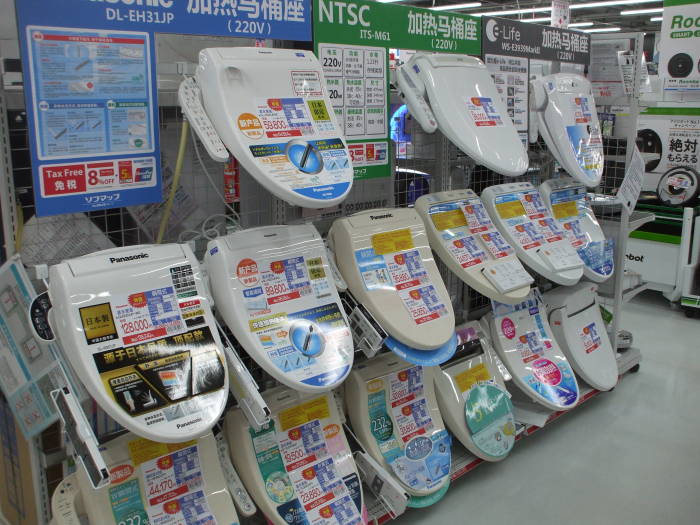
This display is aimed at visitors from mainland Asia and Europe, where home electrical power is 220 volts. North America uses 110 volts.
It's a little worrying that the 220V models are labeled "NTSC", as that's the term for the old analog television broadcast standard used in the US. These don't contain cameras. They seem to be using "NTSC" to indicate "for North America".
Japan has its own unique electrical system. Mains power coming in off the transformer on the pole is 200 VAC center-tap, so heavy appliances like a stove or clothes dryer could have 200 volts. However, most home circuits use one or the other phase and the center-tap neutral. That provides 100 volts feeding outlets very similar to those used in the U.S. and Canada. Very similar, not identical, although the two are close enough that you can plug devices from one country into the outlets of another. Most devices can handle the voltage being about 10% higher or lower than expected.
The strangest part is that eastern Japan (from Tokyo to the northeast) uses 50 Hz, while western Japan uses 60 Hz. Transformers will run a little hotter on the slower frequency. Clocks using the line voltage as a frequency reference will run 20% faster or slower if used in the other part of the country.
The displays warn potential buyers to carefully select a system that they can easily use at home, without needing a bulky and inconvenient transformer.
These aren't cheap. The Panasonic unit at the left end of the middle row costs ¥128,000, about US$ 1,150 at the time. But there's one on the bottom row for just ¥19,500, about US$ 180.
You may may not need to go to Japan to buy one of these seats, they are available in some other countries. Washloo is the UK's only domestic electric bidet brand providing Japanese-style bidets that attach onto existing toilets. In the U.S., Amazon sells multiple brands.
Toilets of the Future
New York Times on futuristic Japanese toiletsBy 2002, engineers had added medical sensors to toilets. These could measure the level of blood sugar excreted in the urine, the pulse rate, blood pressure, and body fat levels. They were also adding voice interfaces.